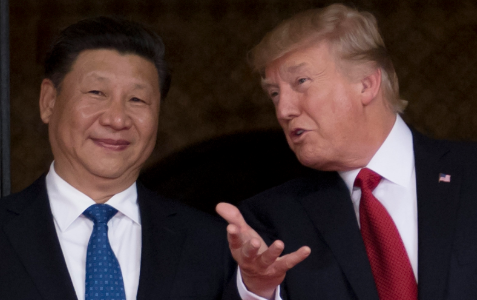
China credit card interest rates at all time high


Although the odds of a US-China trade deal have grown, at least some US tariffs could remain in place as part of a broad pact, according to Goldman Sachs.
Analysts at the investment bank predict some tariffs on Chinese imports will last into 2020, and the US could remove the levies “as various commitments under the agreement have been met.”
“In addition to longer-term reforms involving intellectual property and technology transfer, the White House also appears intent on shrinking the bilateral trade deficit with China in the near-term, potentially through purchase commitments,” Goldman Sachs said in a note to clients late Sunday.
Tensions between the world’s two largest economies have pressured global markets as investors consider the effects of tariffs on corporate earnings and economic growth. The US has imposed tariffs on $250bn worth of Chinese goods, while China has slapped tariffs on $110bn in American imports, in a dispute over trade and Beijing’s economic policies.
Reports this week suggest that US and Chinese officials are nearing an agreement that may be finalised during a face-to-face meeting between President Donald Trump and Chinese president Xi Jinping later this month. Following multiple rounds of talks in Beijing and Washington, Trump administration officials have said the two sides are moving closer to a deal. Citing progress in the talks, Mr Trump agreed to delay an increase in tariffs, extending a March 1 deadline.
“We would expect that the US would push to keep the current tariffs in effect in the near-term and reduce them only once China implements aspects of the agreement. We expect China to press for their immediate removal,” Goldman Sachs said. “Our base case is that some of the tariffs will remain in place into 2020, but the decision ultimately rests in the hands of Presidents Trump and Xi.”
Goldman’s analysts also said China “might be willing to absorb at least a $10bn annual cost through increased purchases from the US,” based on the cost of existing tariffs, as the White House seeks to narrow the country’s trade deficit with Beijing. They estimated that oil and other energy products, agricultural commodities such as soyabeans and semiconductors rank highly on a list of US exports that could get a boost.
The US also seeks greater access to Chinese services markets, and a deal may address specific areas such as financial services and cloud computing, Goldman Sachs said.
An agreement on technology transfer and intellectual property rights “could have long term benefits for US companies operating in China as well as businesses exporting to China from the US,” the group added.
Peter Boockvar, chief investment officer of Bleakley Advisory Group, noted that global markets have seemed to price in a US-China deal “many times over.”
“Assuming we’ve taken off the table this trade battle with China for now, the $64k question is the clouds parting in terms of business visibility with China trade” and whether that is “going to be enough to arrest the global economic slowdown under way,” he said.

The major European stock indices are ending the day with mixed results. The provisional closes are showing:




Risk sentiment is taking on a better tone as we begin the new week, on the back of more positive headlines coming from the US-China trade rhetoric. That is helping to lift equities in the region and Japanese stocks are no exception to that.
